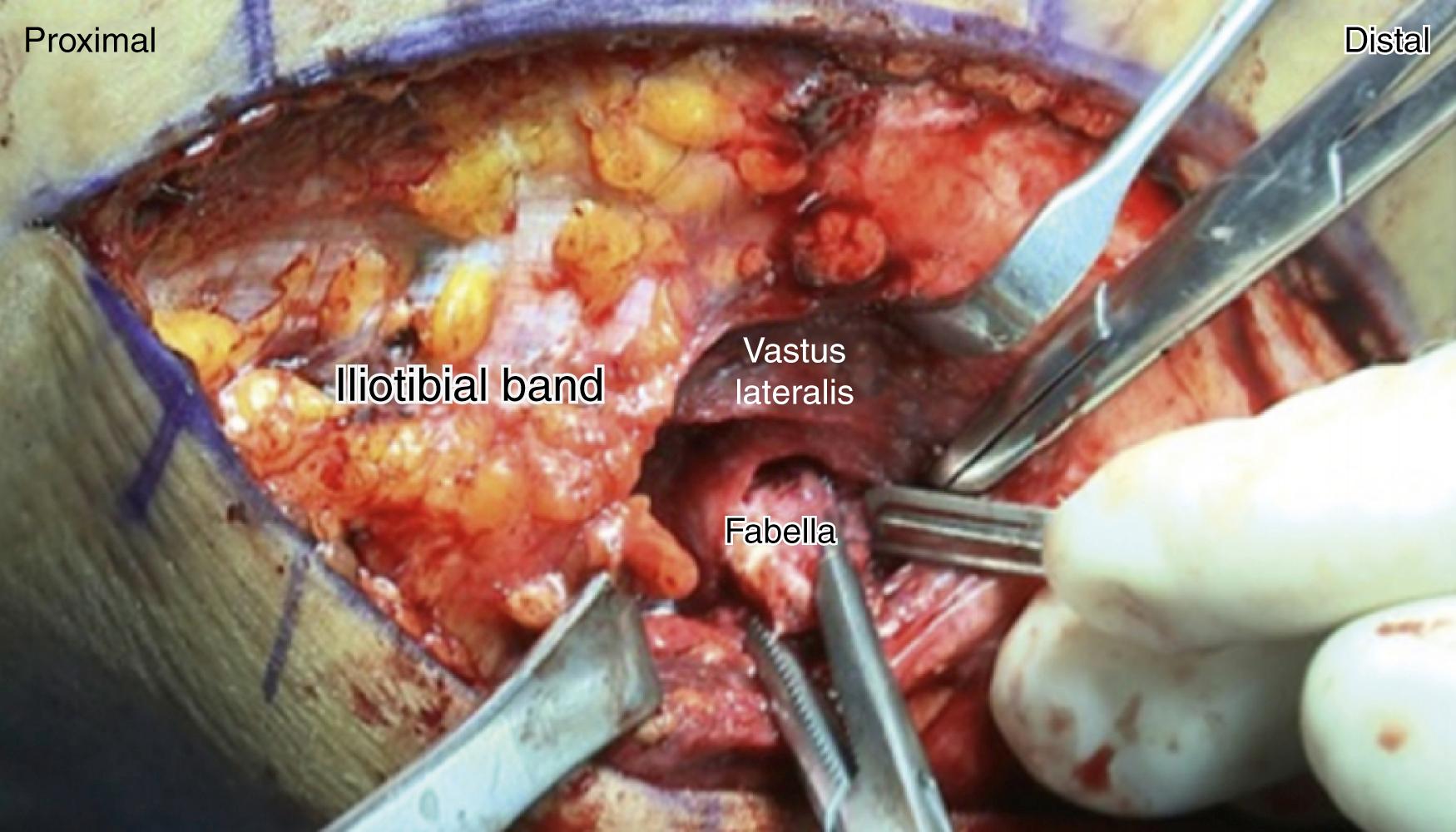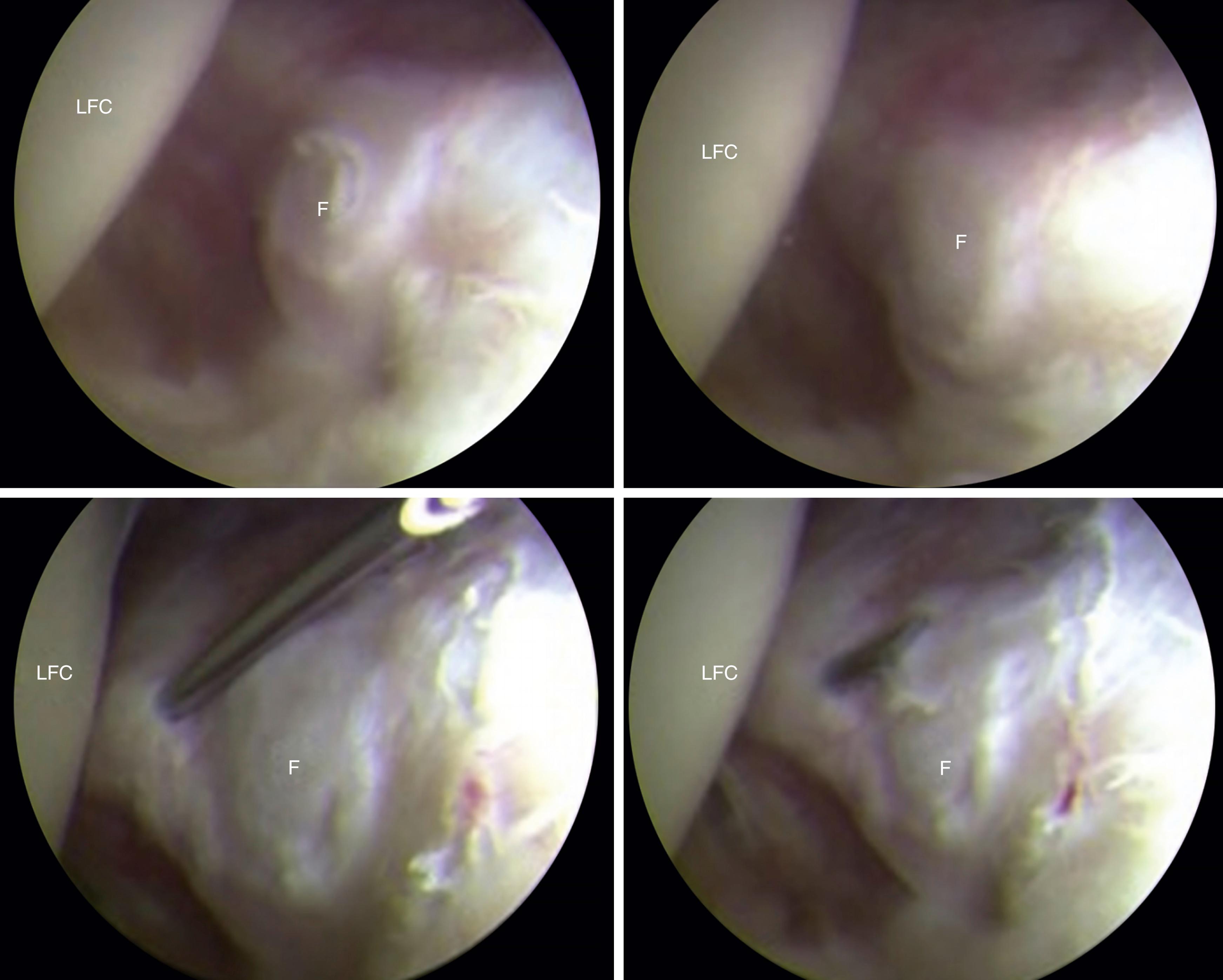Physical Address
304 North Cardinal St.
Dorchester Center, MA 02124
In addition to common knee pathologies which present to a sports medicine practice, there are other relatively uncommon pathologies which rely on one’s physical examination skills and knowledge of anatomy to correctly diagnose and treat. This chapter reviews some of these less common and treatable knee pathologies.
Isolated patellofemoral arthritis (PFA) is a common musculoskeletal condition affecting up to 24% of women and 11% of men older than age 55 years. The lateral patella facet is more often involved, with up to 90% of patients with isolated PFA experiencing involvement of the lateral portion of the patella. Isolated PFA and subsequent anterior knee pain can lead to significant limitations in both activities of daily living and recreational activities and athletics. Nonoperative treatment modalities such as patellofemoral taping or bracing, physical therapy with an emphasis on patellofemoral mobility and injection therapy with either corticosteroids or viscosupplementation exist with varying success rates reported. Surgical intervention is considered when pain and dysfunction persist after nonoperative management in patients with a captured patellofemoral joint who have a large overhanging lateral facet.
Arthroscopic partial lateral facetectomy is a viable surgical treatment option for patients with isolated PFA with an overhanging lateral patellar osteophyte who have persistent anterior knee pain after nonoperative management. The primary goals of this joint-preserving procedure are to improve patella mobility and reduce patellofemoral contact pressures on the arthritic lateral facet. Although more invasive procedures such as patellofemoral arthroplasty or total joint arthroplasty with patellofemoral resurfacing exist, arthroscopic partial lateral facetectomy is a viable, minimally invasive alternative with less immediate postoperative recovery and morbidity in appropriate individuals. , Patients with advanced tricompartmental osteoarthritis, pain in other areas of the knee or lateral patellar instability should not be considered for this procedure.
A thorough physical examination of the knee preoperatively and during an examination under anaesthesia is performed with particular attention paid towards patellar mobility, instability, position and potential crepitus. Standard knee radiographs, including a Merchant or sunrise view, should be obtained. The presence and size of the lateral patellar osteophyte and the amount of resection required can be calculated from the preoperative sunrise radiograph .

The patient is placed supine on an operating table with the operative leg placed into a leg holder (Mizuho OSI, Union City, CA) and the nonoperative leg placed into a well-padded abduction leg holder. The operative extremity is prepped and draped in a sterile fashion, and a well-padded thigh-high tourniquet is inflated to achieve exsanguination for a bloodless operative field. Standard anterolateral and anteromedial arthroscopic portals are made, and a 30-degree arthroscope is introduced into the knee. A diagnostic arthroscopy is performed in all compartments of the knee, and any associated pathological condition, such as meniscal injury, loose bodies or loose chondral flaps, is addressed.
Direct visualisation and confirmation of impingement of the lateral patellar osteophyte with the trochlea is made by taking the knee through a full range of motion with the arthroscope in the anterolateral portal. A radiofrequency device is then used to delineate the amount of lateral facet to be removed based on intraoperative findings and preoperative planning. A 5.5-mm burr is then used to remove the lateral patellar facet with a burr under direct visualisation with the knee held at 20 degrees of flexion. The typical width for resection is, at a minimum, 5.5 mm, which equals one width of the burr. Resection is typically started at the inferior aspect of the patella, which helps prevent both under- and overresection of the lateral patellar facet resection. Once the appropriate amount of the lateral facet has been removed, patella tracking is reexamined. There should be no residual impingement, patellar mobility should be improved and there should be no residual catching of the patella as the knee is brought into flexion. The superolateral aspect of the patella can at times be difficult to reach, and a third accessory portal can be made if residual impingement or any sharp bony edges remain in this area. Great care should be taken during resection to preserve the overlying lateral patellar retinaculum. Resection from the joint side and careful respect of the lateral soft tissues can help avoid injury to the lateral retinaculum and resultant iatrogenic medial patellar instability. Once dynamic visualisation confirms adequate lateral facet resection, haemostasis with a radiofrequency device is achieved, the portal sites are closed and a sterile dressing is applied. Table 37.1 lists pearls and pitfalls for this procedure.
| Pearls | Pitfalls |
|---|---|
| Appropriate candidate selection | Generalised patellofemoral and advanced tricompartmental osteoarthritis are contraindications. |
| Proper preoperative planning of resection | Underresection of bone can lead to persistent pain and inferior outcomes; overresection can compromise the lateral soft tissue attachments. |
| Protection of the lateral retinaculum and vastus lateralis attachment | Soft tissue disruption can lead to iatrogenic medial patellar instability. |
Patients are allowed range of motion as tolerated, and flexion/extension exercises are encouraged immediately after lateral facetectomy. Although weightbearing is allowed as tolerated, crutches are encouraged during the first week until patients are able to walk with no visible limp. Patella mobilisation, quadriceps and hamstring exercises and stationary biking with no resistance are encouraged immediately as well. At postoperative week 3, balance exercises and toe and heel raises are initiated, followed by swimming and 7% incline treadmill walking at week 7. Return to sport as tolerated by the patient typically occurs around postoperative week 20.
Arthroscopic partial lateral facetectomy has been shown to be a safe, minimally invasive surgical treatment option for patients with isolated PFA of the lateral facet. In a prospective case series of 20 patients, Marten and De Rycke reported 90% good to moderate results at a mean follow-up of 2 years. Yercan et al. reported a sustained improvement in functional scores in 11 patients at an average follow-up of 8 years. An additional study involving 39 knees demonstrated Knee Society Score improvement in 84% of patients, with only 30% of subjects progressing to an arthroplasty procedure at an average follow-up of 10 years. A similar retrospective review by Wetzels et al. of 62 knees showed progression to arthroplasty in 39% of patients at an average of 8 years after partial lateral facetectomy. Furthermore, studies have demonstrated equivalent complication rates and successful outcomes of patellar arthroplasty in patients with a history of prior lateral facetectomy. ,
Several investigators have questioned the utility of adding an open lateral release or a tibial tubercle osteotomy to a partial lateral facetectomy. The addition of these procedures has failed to demonstrate a statistically significant improvement in outcomes compared with a partial lateral facetectomy alone, and therefore they have not been recommended. ,
In conclusion, arthroscopic partial lateral facetectomy is a viable surgical treatment option for patients with isolated patellar arthritis with anterior knee pain, a captured patellofemoral joint and an overhanging lateral patellar facet osteophyte. Although results in the literature appear promising, additional long-term studies are necessary to compare partial lateral facetectomy with more invasive arthroplasty procedures for management of isolated PFA.
The fabella is a sesamoid bone located in the tendon of the lateral head of the gastrocnemius muscle. Its presence in the general population is variable, ranging anywhere from 20% up to 87%. Although the vast majority are asymptomatic, individuals with a fabella can sometimes present with posterolateral knee pain that is particularly worse in full extension when the fabella is compressed against the posterior lateral femoral condyle. , Occasionally numbness or radicular pain can develop if the common peroneal nerve is also involved. , Focal posterolateral knee pain can result from cartilage softening and degeneration and periosteal inflammation from mechanical compression on either the lateral femoral condoyle or the fabella itself. , A complete and thorough knee examination is essential to rule out any potential ligament or meniscal injury because the findings associated with fabella syndrome are often nonspecific. Reproducible tenderness to palpation at the lateral gastrocnemius insertion on the femoral condyle is often the only finding present.
Plain radiographs are routinely performed to confirm the presence of a fabella. Magnetic resonance imaging (MRI) can help exclude any other associated pathological conditions in the differential diagnosis for posterolateral knee pain. In cases of isolated fabella syndrome, MRI can also at times reveal thickening of the lateral gastrocnemius tendon, inflammation and oedema around the fabella itself, as well as evidence of grooving or compression of the articular cartilage of the lateral femoral condyle. ,
After fabella syndrome has been appropriately diagnosed, a trial of nonoperative management should be entertained for a minimum of 6 months before surgery should be considered. Steroid injections into the area of maximal tenderness and activity modification have been shown to be beneficial in some cases.
The patient is placed supine on an operating table with the operative leg placed into a leg holder (Mizuho OSI) and the nonoperative leg placed into a well-padded abduction leg holder. The operative extremity is prepped and draped in a sterile fashion, and a well-padded thigh-high tourniquet is inflated to achieve exsanguination for a bloodless operative field.
After the operative knee has been prepped and draped, surface anatomy landmarks including the Gerdy tubercle, the fibular head, the lateral joint line and the iliotibial (IT) band should be marked. A roughly 8 cm long incision from the Gerdy tubercle extending proximally along the course of the posterior border of the IT band centred over the lateral joint should be made with sharp dissection. The IT band should be incised along the same course as the previously made skin incision with great care taken to avoid deep dissection and resultant injury to the popliteus tendon, anterolateral ligament or fibular collateral ligament (FCL). Additionally, dissection should never proceed posterior to the long head of the biceps tendon to avoid injury to the common peroneal nerve. Blunt dissection anterior to the biceps femoris is carried out through the interval between the lateral gastrocnemius and the FCL, aiming distally and medially to the fibular head. Adhesions between the lateral gastrocnemius and the posterolateral capsule can be released with blunt digital dissection or with the use of a Cobb elevator.
After the adhesions have been released, digital palpation is used to identify the fabella, which is then secured with an Allis clamp ( Fig. 37.1 ). Arthroscopy is performed before fabella excision to limit fluid extravasation before intraarticular pathological conditions are addressed. After diagnostic arthroscopy, a 70-degree arthroscope is used to create a posterolateral portal and to verify friction of the fabella with the posterior lateral femoral condyle under direct visualisation ( Fig. 37.2 ). Once all intraarticular work is completed, either a 30-degree or 70-degree arthroscope is used to aid in fabella excision under direct visualisation to minimise capsular tissue removal during excision. After the fabella has been excised, the arthroscope is used to confirm complete removal and elimination of the friction and compression through a full range of motion.

Full range-of-motion exercises as well as quad sets, ankle pumps, and straight leg raises are initiated immediately after surgery to help minimise quadriceps atrophy and stiffness. Weightbearing to tolerance is also initiated immediately after surgery. Crutch use is encouraged until ambulation can be done without a limp. Braces are not routinely used, and full return to competitive sport typically occurs in approximately 3 months.
Become a Clinical Tree membership for Full access and enjoy Unlimited articles
If you are a member. Log in here